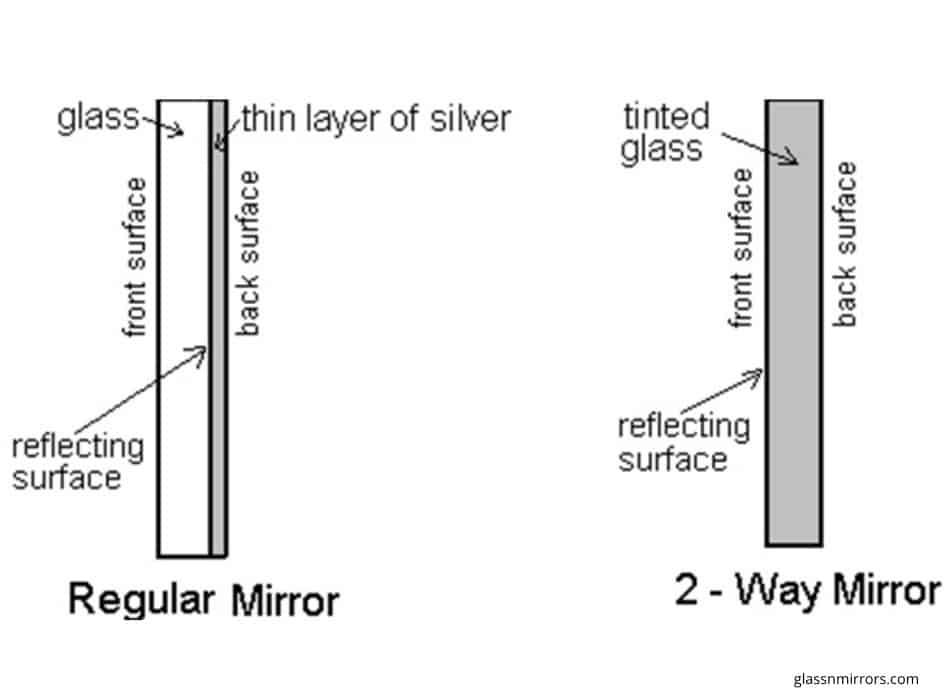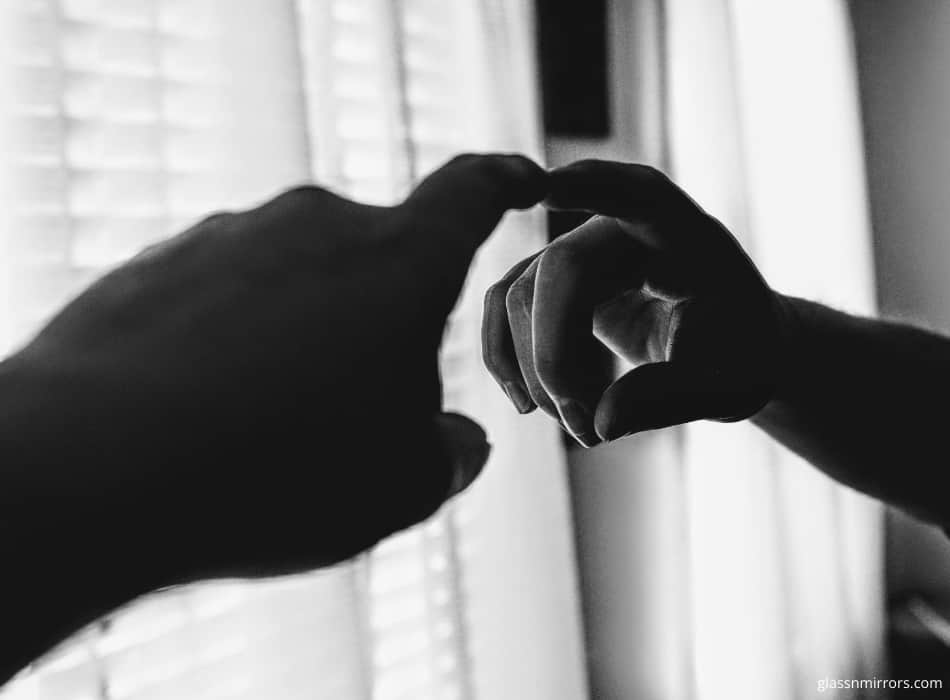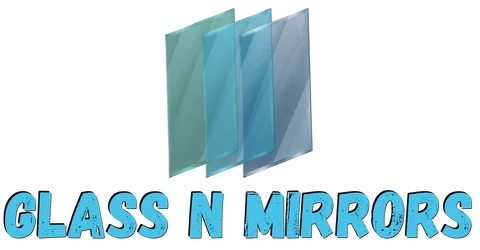Ever get the feeling that someone was watching you as you walked past a storefront or parked car or even as you touched up your makeup in front of a restaurant’s bathroom mirror? I have, and it turned out that it wasn’t just my sixth sense or imagination acting up but the fact that a number of these establishments were using 2-way mirrors. Why are 2-way mirrors bad?
2-way mirrors get a bad name because of the invasion of one’s privacy. Someone can be watching you from behind and you would not even know. 2-way mirrors are generally in place for security reasons.
Two-way mirrors tend to receive a bad rap thanks to the fact that they feature heavily in cop and horror movies. However, do they really deserve their dubious reputation as spy tools? Read on to find out exactly what 2-way mirrors are and discover whether they really are as bad as they are made out to be.
Table of Contents
- 1 What Does It Mean When You Have a 2 Way Mirror?
- 2 What Are The Differences Between standard and Two Way Mirrors?
- 3 What Are The Common Types of Two Way Mirrors?
- 4 What Are 2 Way Mirrors Used For?
- 5 What Are The Benefits Of Two Way Mirrors?
- 6 Disadvantages of Two Way Mirrors – Why Are 2 Way Mirrors Bad?
- 7 Are 2 Way Mirrors Illegal?
- 8 Conclusion
What Does It Mean When You Have a 2 Way Mirror?
A two-way mirror is one that looks like a window when viewed from one side and appears as a mirror on the other side.
This effect is created by the fact that 2 way mirrors only allow 11% of light to pass through while reflecting the other 70%. This is how a 2-way mirror works:

Two-way mirrors work on a principle of light intensity. If the light intensity is the same on both sides of the glass, the mirror will look like a normal piece of glass.
But when the light is bright on one side and much darker on the other, the glass will look like a mirror to the people on the brighter side. The same thing happens when you try to look out a window at night. Even though people on the outside can see you, you can only see your reflection.
Do mirrors make you look bigger? See my article – Truth or Myth?
A two-way mirror is similar to regular mirrors in the sense that both have a reflective coating that traps light. However, unlike a regular mirror, the coating on a 2-way mirror is sparse, trapping about 11% of the light while reflecting the other 70%.
Two-way mirrors are made by coating a gray-tinted pane of glass with a thin layer of aluminum. This has the effect of only allowing the minimal amount of light to go through the pane and effectively creates the two-way mirror
If you’d like to learn more about how 2-way mirrors work, I found this great video on YouTube that delves a bit more into the science behind them.
What Are The Differences Between standard and Two Way Mirrors?
Telling the difference between standard and two-way mirrors can be difficult for the untrained eye. However, I discovered that there are several differences between the two to help you distinguish between one and two-way mirrors. These include:
Image behavior
One of the major differences between standard and two-way mirrors is the way images/reflections behave depending on which of the two mirrors you are using. By utilizing a test known as the fingernail test, you can discover exactly which type of mirror it is that you are dealing with.
The fingernail test involves placing your finger on the surface of the mirror. With a standard mirror, you should be able to observe a distinct gap between your finger and its reflection. If you are dealing with a two-way mirror, there will be no discernible gap between your finger and the image in the mirror.
Installation
A standard mirror will typically be mounted onto a surface such as a wall or a cabinet. You can clearly see where the mirror comes into contact with the surface. A two-way mirror will however appear to be mounted into the space between two walls much like a window.
The sound they make
Conducting a sound test is one of the best ways to find out whether you are dealing with a one or two-way mirror. I’ve found that tapping directly on the mirror and listening to the sound it makes is all it takes to discover what type of mirror I am dealing with. If the mirror emits a sharp, hollow sound when tapped, then it means that there is an empty room behind it from which I am being observed.
Location
A standard mirror is usually found in places you’d expect such as a bathroom, changing room, and others. However, two-way mirrors, especially those that have been installed for dubious purposes such as spying, will be found in unusual places where you would expect more privacy.
Lighting
The lighting will need to be stronger in the room you are in and dimmer in the observing room in order to maintain the illusion of a one-way mirror. If you notice that the room you are in is unusually bright, it could mean that you are dealing with a two-way mirror.

What Are The Common Types of Two Way Mirrors?
There are several types of two-way mirrors and these are usually classified depending on the material they are made from. Common types of two-way mirrors include:
Glass two-way mirrors
This mirror is created by baking a thin layer of aluminum onto grey tinted glass, resulting in a durable mirror that is easy to maintain.
Acrylic two-way mirrors
A stronger and more versatile option than glass, acrylic two-way mirrors are ideal for high-use areas such as schools and hospitals where the risk of breakage is high. They also come in a wider variety of colors which makes them the most popular two-way mirror glass option.
Dome two-way mirrors
This type of two-way mirror is shaped like a dome and is used for hiding cameras in areas that require a lot of surveillance such as jails, schools, hospitals, and others.
Two-way mirror security film
This is a two-way mirror that has been reinforced with security film for greater security and privacy.
What Are 2 Way Mirrors Used For?
2-way mirrors have many applications in private, commercial, and government spaces. You already know that 2-way mirrors have been used extensively in police work and specifically in interrogation rooms. However, 2-way mirrors are also used for the following purposes:
1. Commercial surveillance: 2-way mirrors provide a discreet solution for observing business premises and enhancing security in these areas. They are especially useful in open plan areas such as retail shops, banks, showrooms, offices, and others. Most commercial surveillance involves the installation of two-way acrylic mirror sheets and domed acrylic sheeting that is installed in building ceilings.
Some people think that mirrors have a delay. See my article explaining the truth.
2. Home security: Two-way mirrors are great for enhancing your home’s security as they allow you to install cameras behind mirrors, replace regular mirrors for greater staff surveillance and even hide televisions and other valuables behind them.
3. Market research: Businesses often conduct qualitative market research by observing focus groups in certain settings. Using a two-way mirror allows researchers to observe consumer behavior and influence subjects to make positive decisions with regard to your brand.
4. Scientific research: Two-way mirrors are sometimes used to split laser beams in scientific experiments. In addition, scientists use them to observe experiments from afar, especially where there is a risk of contamination or experiments require optimal conditions in order to succeed.
5. Automotive windows: Two-way mirrors are widely used in the fabrication of solar-safe car windows to prevent cars from overheating in sunny weather conditions. They also provide privacy from pedestrians and other drivers especially if you choose to use tinted windows.
What Are The Benefits Of Two Way Mirrors?
Thanks to the fact that they are used for so many applications, two-way mirrors have a number of benefits to offer users. These include:
- The discretion to view subjects like police suspects, focus groups, employees and others without running the risk of being discovered.
- Increased home security by allowing you to hide valuable appliances such as TVs and others behind two-way mirror screens.
- Improved security in commercial spaces by allowing security personnel to observe people on shop floors, mall common areas, and others in order to mitigate security risks.
- Two-way mirrors have an indirect impact on market research as they allow researchers to observe consumer behavior and use their findings to improve marketing strategies.
- Two-way mirrors and other types of reflective glass keep your home or business cool in the summer and warm in the winter. This also has the effect of lowering your utility bills since you will not be using your AC or heater to keep temperatures regulated.
- Two-way mirrors are highly durable and built to last.
- They help to protect the interior of your home or office from UV light damage which ensures that they do not wear out quickly.
Disadvantages of Two Way Mirrors – Why Are 2 Way Mirrors Bad?
In spite of the many benefits that they offer to different types of users, 2-way mirrors do have several disadvantages that have led to their being labeled bad. These include:
Invasion of privacy
If installed in private areas and especially without the knowledge and consent of the people who will be using them, two-way mirrors can cause and lead to an invasion of privacy. Should the people who are affected find out, this can lead to problems with the law and result in serious legal consequences?
Participant intimidation
People who are taking part in your marketing research program or police interrogation are already aware that it’s you hiding behind the glass. This might make them nervous and ultimately affects the results you expect to get from them.
Expense
Two-way mirrors that are made from glass tend to be expensive, especially since they are made from specialized glass that is only supplied by very specific suppliers.
Are 2 Way Mirrors Illegal?
It is illegal to install 2-way mirrors in public places and especially, bathrooms, toilets, washrooms, restrooms, and others. For example, the California Code, Penal Code – PEN § 653n states that:
Any person who installs or who maintains after April 1, 1970, any two-way mirror permitting observation of any restroom, toilet, bathroom, washroom, shower, locker room, fitting room, motel room, or hotel room, is guilty of a misdemeanor.
This section does not apply to such areas (a) in state or local public penal, correctional, custodial, or medical institutions which are used by, or for the treatment of, persons who are committed or voluntarily confined to such institutions or voluntarily receive treatment therein; (b) in private custodial or medical institutions, which are used by, or for the treatment of, persons who are committed or voluntarily confined to such institutions or voluntarily receive treatment therein; (c) in public or private treatment facilities which are used by, or for the treatment of, persons who are committed or voluntarily confined to such facilities or voluntarily receive treatment therein; (d) in buildings operated by state or local law enforcement agencies; or (e) in public or private educational institutions.
“Two-way mirror” as used in this section means a mirror or other surface which permits any person on one side thereof to see through it under certain conditions of lighting, while any person on the other side thereof at that time can see only the usual mirror or other surface reflection.’(2)
Conclusion
Two-way mirrors have a number of advantages to offer home and business owners, law enforcement officers, and other relevant parties. These advantages include increased privacy, security, weather protection, and many others.
However, two-way mirrors also have several disadvantages, including the fact that they infringe on people’s privacy and are illegal when installed in private areas such as bathrooms and washrooms
Whether you are choosing a two-way mirror for your home, business, or place of work, it is important to take into consideration state laws, municipal ordinances, and other local authority rules in order to ensure that you are not infringing on people’s rights or doing something that is illegal.

1 thought on “Are 2 Way Mirrors Bad? The Facts”
Comments are closed.